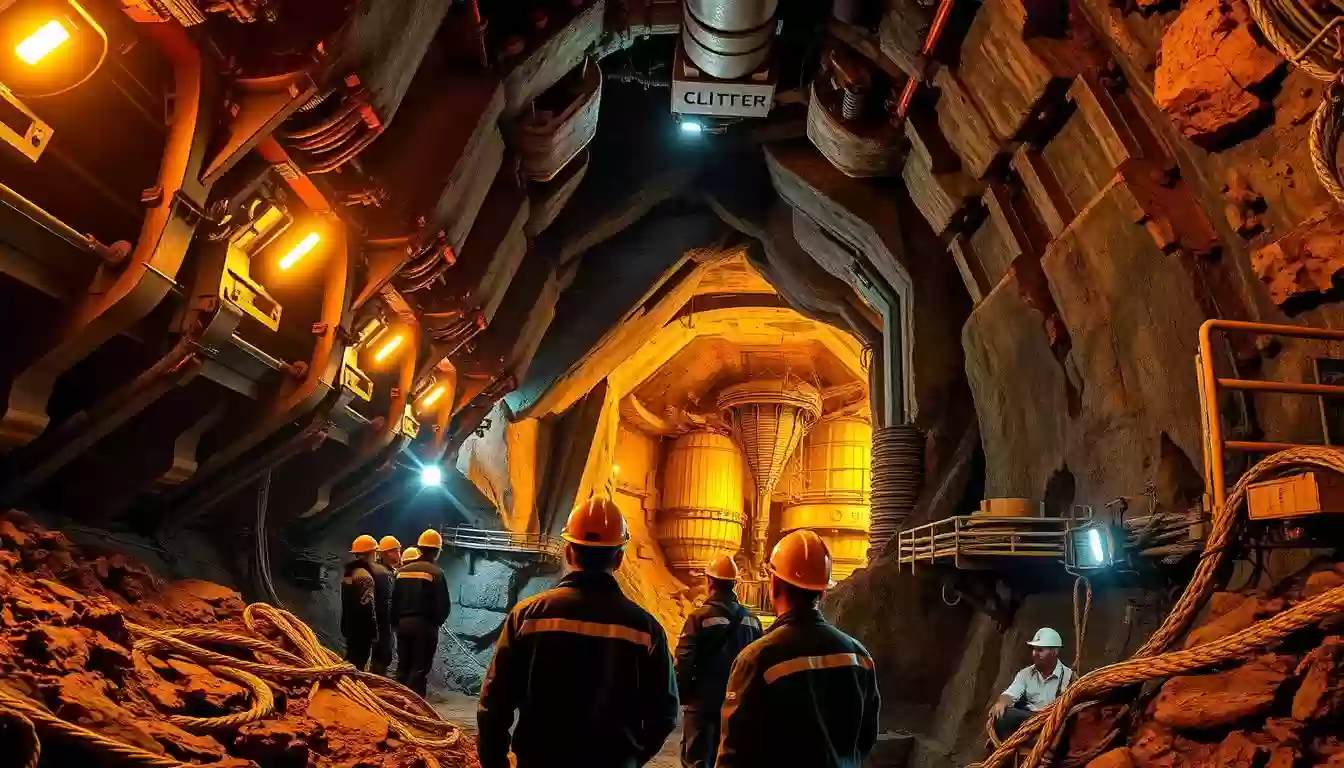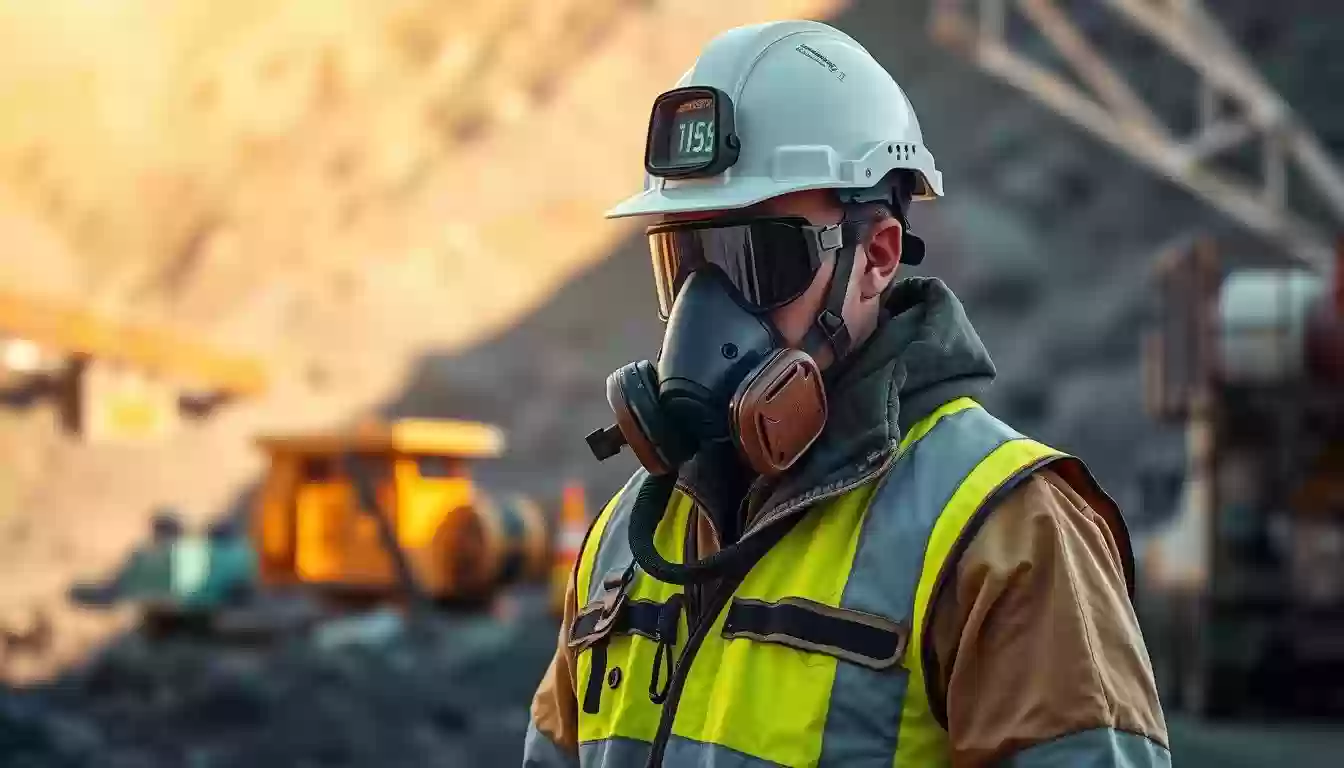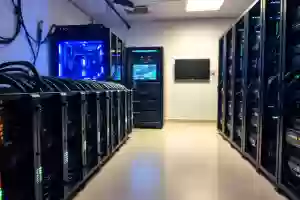How to Implement Secure Mining Practices Effectively
 05 Mar 25
05 Mar 25
The mining industry plays a vital role in our economy, but it comes with significant risks. In 2023, 16 miners lost their lives due to malfunctioning machinery, underscoring the urgent need for robust safety protocols. These incidents remind us that mine safety must always come first.
Implementing proper safety measures not only reduces accidents but also boosts operational efficiency. Recent data shows that hazards like poorly maintained equipment and coal dust can lead to severe consequences. By integrating advanced safety systems, mining companies can protect both their workers and equipment, ensuring a safer workplace.
This article aims to guide mining companies in adopting best practices and leveraging technological advancements. We will blend technical insights with practical advice, making it accessible to a broad audience. Whether you're a seasoned professional or new to the industry, this guide will provide clear, actionable steps to enhance mining safety and overall operational success.
By focusing on health and safety, proper training, and regular maintenance, we can create a safer, more efficient mining environment. Let's work together to build a future where miners return home safely every day.
Understanding the Importance of Secure Mining Safety
Mining is a cornerstone of our economy, but it also presents significant challenges that demand attention. The industry's safety record underscores the need for vigilant measures to protect workers and equipment. Mine safety is not just a regulation; it's a moral imperative.
Risks of Neglected Safety Measures
Overlooking safety protocols can have dire consequences. Equipment malfunctions and poor maintenance are leading causes of accidents. Coal dust and toxic gases pose serious health risks, including lung damage and respiratory illnesses. Without proper safety measures, miners face increased dangers from cave-ins and loose rocks.
Communication failures among workers can exacerbate these risks. In 2023, 16 miners lost their lives due to malfunctioning machinery, highlighting the urgent need for robust safety protocols. These incidents remind us that mine safety must always come first.
Benefits of Proactive Safety Protocols
Adopting proactive safety measures offers numerous benefits. Reduced accident rates and improved worker morale are direct outcomes. By integrating advanced safety systems, mining companies can protect both their workers and equipment, ensuring a safer workplace.
Proactive measures also save costs and enhance operational continuity. They improve employee confidence and boost the industry's reputation. Investing in safety is not just about compliance; it's about creating a sustainable future for the mining industry.
| Aspect | Neglected Safety | Proactive Safety |
|---|---|---|
| Risk Level | High | Low |
| Accidents | Frequent | Reduced |
| Costs | Higher | Lower |
| Morale | Low | Improved |
By focusing on health and safety, proper training, and regular maintenance, we can create a safer, more efficient mining environment. Let's work together to build a future where miners return home safely every day.
Implementing Robust Safety Protocols in Mining Operations
Ensuring the safety of mining operations is crucial for protecting workers and equipment. Effective safety protocols not only prevent accidents but also enhance operational efficiency. In this section, we will explore two critical components of robust safety protocols: lockout-tagout (LOTO) procedures and regular equipment inspections.
Effective Lockout-Tagout Procedures
Lockout-tagout (LOTO) procedures are essential for ensuring that machinery is safely de-energized before maintenance begins. According to reports, failure to execute proper LOTO procedures has led to fatal incidents, such as when a jaw crusher’s movable parts were not adequately blocked, resulting in a tragic accident. Proper LOTO involves several key steps:
- Shutting off the power supply to the equipment
- Isolating all energy sources, including electrical, hydraulic, and pneumatic
- Applying physical locks to ensure the equipment cannot be restarted
- Using tags to communicate that the equipment is under maintenance
These steps ensure that workers are protected from unexpected start-ups or energy releases during maintenance work. The Mine Act guidelines emphasize the importance of proper LOTO procedures to prevent such incidents.
Regular Equipment Inspection and Maintenance
Regular inspections and maintenance are vital for ensuring the safety and reliability of mining equipment. Inspections help detect wear, damage, or malfunctions before they lead to accidents. Common inspection methods include:
- Visual inspections to identify visible damage or wear
- Performance tests to ensure equipment is functioning correctly
- Using specialized tools to check for hidden issues
Routine maintenance can increase equipment longevity and prevent unexpected breakdowns. By addressing issues early, mining companies can avoid costly repairs and reduce the risk of accidents. The Mine Act guidelines require proper safety procedures and training on LOTO, making it essential for companies to prioritize these practices.
Clear protocols minimize risks and help prevent accidents due to human error or miscommunication. Mining companies must make these protocols part of their standard operating procedures to ensure a safer working environment. By focusing on these measures, the mining industry can reduce hazards and protect workers effectively.
Enhancing Worker Training and Personal Protective Equipment
Creating a safer mining environment begins with empowering workers through comprehensive training and the correct use of personal protective equipment (PPE). These elements are crucial for reducing injuries and ensuring compliance with industry standards.
Comprehensive Training Programs
A well-structured training program is essential for fostering a culture of safety. It should cover:
- New employee orientation to introduce safety protocols
- Refresher courses to reinforce safe practices
- Emergency response training
Regular training not only reduces accidents but also boosts worker confidence and operational efficiency.
Best Practices in PPE Usage
PPE is vital for protecting miners from hazards like falling debris and toxic exposures. Key components include:
- Hard hats for head protection
- Gloves and steel-toed boots for hand and foot safety
- Respiratory protection against harmful dust
Proper selection, maintenance, and regular inspections ensure PPE effectiveness.

Legal guidelines mandate periodic training and certification. A robust training program contributes to a proactive safety culture, reducing accident rates and fostering a safer workplace. For more tips on safe mining practices, visit our resource page.
Leveraging Technology for Improved Mine Safety
Technology is revolutionizing the mining industry, offering innovative solutions to enhance safety and efficiency. Advanced tools like digital monitoring systems and automation are transforming how mines operate, ensuring a safer environment for workers.
Digital Monitoring and Early Warning Systems
Digital monitoring systems provide real-time data, enabling mines to predict and prevent hazards. These systems monitor factors like gas levels and equipment performance, allowing for quicker emergency responses and less downtime. By integrating these systems, mines can address issues before they escalate, significantly reducing risks.
Automation and Predictive Maintenance
Automation and predictive maintenance are key to identifying equipment issues before they cause failures. Sensors and AI algorithms monitor machinery, scheduling maintenance only when needed. This approach reduces unexpected breakdowns and enhances safety. For instance, predictive maintenance can detect worn parts, preventing accidents and prolonging equipment life.
Investing in these technologies offers financial and operational benefits. They improve safety, reduce costs, and ensure compliance with regulations. As the mining industry evolves, embracing technology is crucial for creating a safer, more efficient work environment.
Addressing Geotechnical Hazards and Environmental Risks
Modern mining operations face significant geotechnical challenges that can threaten both worker safety and environmental stability. Key among these are rockfalls, cave-ins, and the presence of toxic airborne substances like silica and radon gas, which pose serious respiratory health risks to miners.
Managing Airborne Dust and Toxic Substances
Airborne dust and toxic gases are persistent hazards in mining environments. Silica dust, in particular, can lead to severe lung diseases, while radon gas exposure is linked to long-term health issues. To mitigate these risks, mining companies employ advanced ventilation systems and dust suppression technologies.
| Environmental Monitoring Technique | Application | Effectiveness |
|---|---|---|
| Real-Time Gas Monitoring | Detects hazardous gas levels | High |
| Particulate Matter Sensors | Measures dust concentrations | Very High |
| Geotechnical Assessments | Identifies structural weaknesses | High |
Continuous geotechnical assessments play a vital role in predicting structural changes and environmental risks. By combining engineering expertise with advanced monitoring tools, mining companies can proactively address potential hazards. For a deeper understanding of geotechnical risk management, visit this resource.

Core Strategies for Secure Mining Practices
The foundation of effective mining operations lies in adopting a robust safety culture. This culture is not just about following rules but creating an environment where every miner feels responsible for collective well-being. By integrating safety into daily routines, mining companies can significantly reduce hazards and enhance operational resilience.
Integrating Safety Culture into Daily Operations
Building a strong safety culture begins with clear communication and leadership commitment. Regular safety meetings and open dialogue channels ensure that every worker's concerns are heard and addressed. Leadership must set the tone by prioritizing safety and leading by example.
Employee involvement is equally crucial. When miners feel empowered to identify and report risks, they become active participants in maintaining a safe environment. This collective responsibility fosters a proactive approach to hazard mitigation and accident prevention.
Real-world examples highlight the effectiveness of combining process, training, and technology. For instance, a mining company implemented advanced monitoring systems and rigorous training programs, reducing incidents by 40% within a year. Such successes demonstrate the tangible benefits of a holistic safety approach.
Continuous evaluation of safety protocols is essential. As conditions change, so too must the strategies. Regular updates to procedures ensure they remain effective and relevant, adapting to new challenges and technologies.
Safety is more than a procedural obligation; it is a core value that saves lives. Embedding this culture yields long-term benefits, including fewer dangers and improved operational efficiency. A strong safety culture not only protects workers but also strengthens the company's reputation and sustainability.
Conclusion
In conclusion, integrating robust safety measures and technological advancements is essential for modern mining operations. By focusing on worker training, advanced technology, and proactive safety protocols, the industry can significantly minimize risks and enhance operational efficiency.
The real-world impact of these practices is clear. Recent case studies and regulatory mandates underscore the necessity of adopting such strategies. Mining companies must prioritize these approaches to improve both worker health and overall productivity.
As technology continues to evolve, the future of mining looks promising. Ongoing innovations will likely lead to even safer and more efficient practices. We encourage the industry to embrace these strategies and join the conversation on creating a safer, more productive mining environment for all.
FAQ
What are the most common hazards in mining environments?
Common hazards include cave-ins, gas explosions, and airborne dust. Regular inspections and proper ventilation systems can mitigate these risks effectively.
How can miners protect themselves from coal dust exposure?
Use of personal protective equipment like respirators and regular health check-ups are essential. Employers should also ensure proper ventilation systems are in place.
What safety measures should be in place for mobile equipment?
Operators should undergo thorough training and equipment should be fitted with proximity detection systems to prevent accidents.
How often should safety training be conducted?
Training should be conducted regularly, with updates on new procedures and equipment. Annual refreshers are recommended to keep safety knowledge current.
What are the benefits of implementing safety protocols?
Benefits include reduced injury rates, improved morale, and compliance with safety regulations, leading to a safer and more efficient work environment.
How can mining companies ensure a safe working environment?
By conducting regular risk assessments, providing protective gear, and maintaining equipment, companies can significantly enhance workplace safety.
What role does personal protective equipment play in mining safety?
PPE such as helmets, gloves, and respirators are crucial in protecting workers from physical and respiratory hazards, ensuring their safety on site.
How can cave-ins be prevented in mining operations?
Through geotechnical assessments and installing support structures, the risk of cave-ins can be minimized, ensuring a stable working environment.
What should be included in a comprehensive safety training program?
Training should cover emergency procedures, equipment usage, and hazard recognition, ensuring miners are well-prepared for potential risks.
How does technology contribute to mine safety?
Technologies like gas monitoring systems and automated equipment enhance safety by providing real-time data and reducing human error.
What are the consequences of neglecting safety measures?
Neglecting safety can lead to accidents, injuries, and environmental damage, emphasizing the importance of proactive safety measures.








